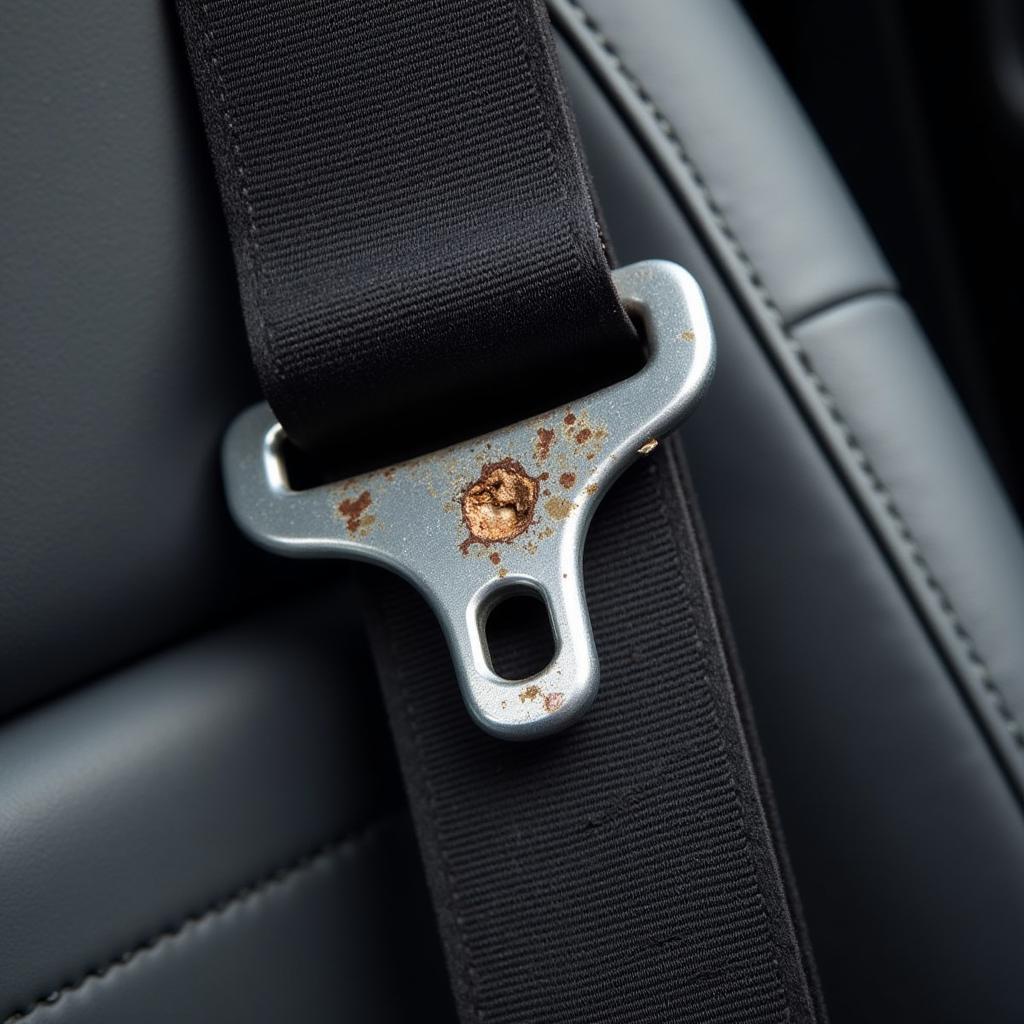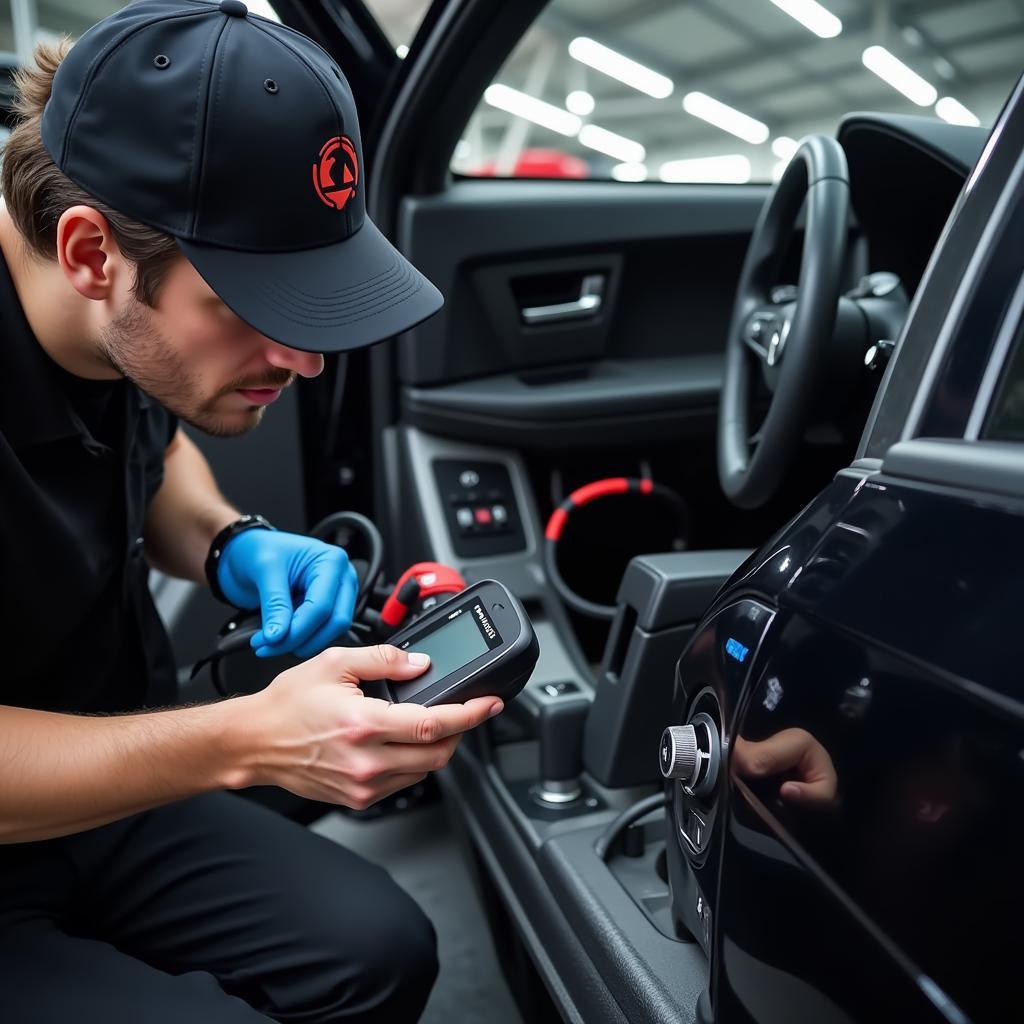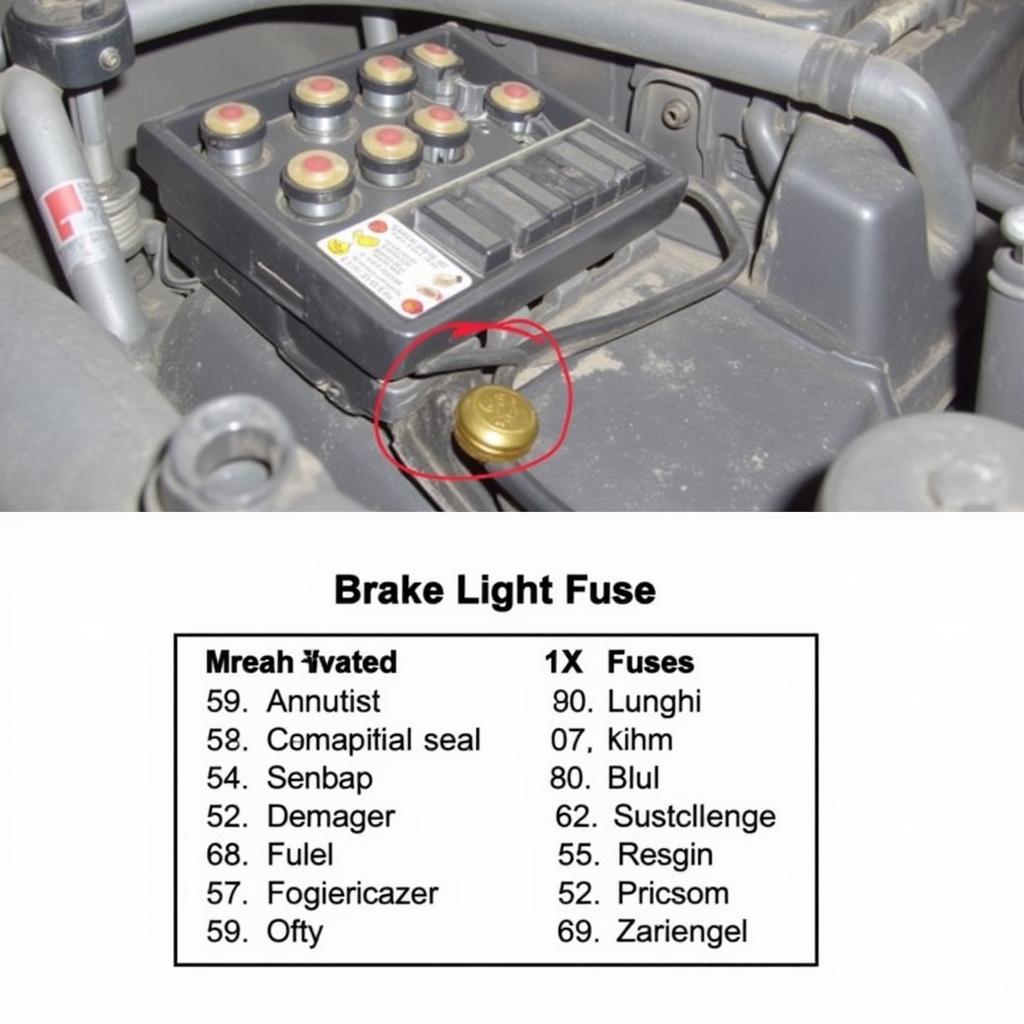A flashing seat belt warning light on your dashboard is more than just an annoyance. It’s a crucial safety reminder and often a signal of a potential problem within your car’s safety restraint system. While the most common reason is simply an unbuckled seat belt, several other issues could be at play. This comprehensive guide will help you understand why your seat belt warning light is flashing and how to address the issue.
Common Reasons Your Seat Belt Warning Light Flashes
Unbuckled Seat Belt or Improper Fastening
Let’s start with the obvious: the most frequent cause of a flashing seat belt light is an unbuckled seat belt. Before you investigate further, ensure that all passengers have their seat belts securely fastened. Even a slight misalignment of the buckle can trigger the warning light.
Faulty Seat Belt Buckle Sensor
Your car’s seat belt system relies on sensors within the buckle to detect if the belt is fastened. Over time, these sensors can wear out, become dirty, or experience a short circuit. A malfunctioning sensor can send a false signal to your car’s computer, causing the warning light to flash even when the seat belt is properly buckled.
 Faulty Seat Belt Buckle
Faulty Seat Belt Buckle
Damaged Wiring Harness
The wiring harness connects the seat belt buckle sensor to your car’s electrical system. Damage to this wiring, such as fraying, corrosion, or a loose connection, can disrupt the signal transmission, leading to a flashing seat belt warning light.
Weight Sensor Issues
Many modern vehicles are equipped with weight sensors in the passenger seats to determine if the seat is occupied and activate the airbag system accordingly. A malfunctioning weight sensor might incorrectly register weight even when the seat is empty, triggering the seat belt warning light.
 Car Seat Weight Sensor
Car Seat Weight Sensor
Software Glitch
Like any computer system, your car’s onboard computer can experience software glitches. These glitches can disrupt the communication between the various sensors and the warning light system, causing unexpected behavior, including a flashing seat belt warning light.
Diagnosing the Problem
Determining the exact cause of a flashing seat belt light often requires diagnostic equipment. Here’s a breakdown of potential approaches:
-
Visual Inspection: Start by visually inspecting the seat belt buckles, wiring, and connectors for any visible damage, debris, or loose connections.
-
OBD-II Scanner: An On-Board Diagnostics (OBD-II) scanner can read trouble codes stored in your car’s computer. These codes can pinpoint the specific area of the seat belt system experiencing issues.
-
Professional Diagnosis: For complex issues or if you’re uncomfortable troubleshooting electrical systems, consulting a qualified automotive electrician or mechanic is recommended. They possess specialized tools and expertise to diagnose and repair intricate automotive electrical problems.
 Mechanic Diagnosing Car Issue
Mechanic Diagnosing Car Issue
“When dealing with safety-critical systems like seat belts, it’s always best to err on the side of caution and seek professional assistance if you’re unsure about any aspect of diagnosis or repair,” advises John Miller, a senior automotive electrician with over 20 years of experience.
Solutions for a Flashing Seat Belt Warning Light
The solution to a flashing seat belt warning light depends entirely on the underlying cause. Here are some possible solutions:
Simple Fixes
- Fasten Your Seat Belt: It seems obvious, but ensure all occupants have their seat belts properly fastened.
- Check Buckle Connection: Verify that the seat belt buckle is clicked securely into the receptacle.
- Clean the Buckle: Dirt and debris can interfere with the buckle sensor. Gently clean the buckle with compressed air or a cotton swab and electrical contact cleaner.
More Involved Repairs
- Replace Faulty Components: If a faulty sensor, damaged wiring, or a broken buckle is identified, replacing the defective component is necessary.
- Software Update: Sometimes, a simple software update from the manufacturer can resolve glitches causing the warning light to malfunction.
- Professional Repair: For complex electrical issues, particularly those involving airbag systems, it’s crucial to seek professional repair from a qualified technician.
Preventing Future Issues
While not all issues are preventable, some proactive measures can help keep your seat belt system in optimal condition:
- Regular Inspection: Periodically inspect your seat belts and buckles for signs of wear, damage, or loose connections.
- Careful Handling: Avoid placing heavy objects on the seats, which could damage the sensors or wiring beneath.
- Timely Repairs: Address any issues with your seat belt system promptly to prevent further damage or safety risks.
Ignoring the Warning: A Risky Gamble
A flashing seat belt warning light should never be ignored. It signifies a potential problem with your vehicle’s safety restraint system. Remember, a properly functioning seat belt is your first line of defense in an accident, significantly reducing the risk of serious injury.
If you’re experiencing a persistent seat belt warning light issue, don’t delay in seeking professional assistance. Your safety is paramount, and a quick resolution can give you peace of mind on the road.
Frequently Asked Questions
Q: Can I disable the seat belt warning light?
A: While technically possible in some vehicles, tampering with safety systems is strongly discouraged. Disabling the warning light eliminates a crucial safety reminder and could have legal ramifications.
Q: My seat belt warning light flashes intermittently. What could be the problem?
A: Intermittent flashing often points to a loose connection, a failing sensor, or a wiring issue. It’s best to have the system diagnosed to pinpoint the cause.
Q: How much does it cost to fix a seat belt warning light issue?
A: The cost varies greatly depending on the underlying problem. A simple cleaning might be inexpensive, while replacing a sensor or repairing wiring could be more costly.
Q: Can I drive my car with a flashing seat belt warning light?
A: While driving is technically possible, it’s not recommended. The flashing light indicates a potential safety issue that could compromise your well-being in an accident.
Q: Do I need to take my car to a dealership to address a seat belt warning light problem?
A: Not necessarily. Reputable automotive electricians or mechanics specializing in electrical systems are often qualified to diagnose and repair seat belt warning light issues.
“Remember, addressing a seat belt warning light promptly ensures the optimal function of your car’s safety systems, providing you and your passengers with the highest level of protection on the road,” emphasizes Sarah Thompson, a certified automotive safety expert.

